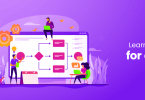
Organizations complain about the lack of the right human resources and training tools. Why? They do not see the expected results in performance. We hear too many companies complain of a gap between training and performance. They seem to have the required talent, the relevant knowledge, the needed tools and even the desired experience, yet they are unable to reach the company goals.
Extant research blames these failures on one element alone: lack of knowledge management. In this article, we present thirteen ways in which you can use your learning management system to manage your organization’s knowledge.
Let’s examine each of these knowledge management related complaints and prescribe a feature of your learning management system for appropriate correction:
1. Lack of performance indicators and measurable benefits
Training managers and organization strategic planners can combine forces to create key performance indicators (KPIs). Each of these performance indicators need to be measureable.
For example, 60 software sales per week, 35 memberships sold per quarter, 150 hardware assembly per month and so on. Measurable goals need to be assigned in the learning management system.
This involves the entire organization in the goal making and goal achievement process. Don’t forget to announce incentives to motivate employees as periodic notifications: win a trip to Thailand with your family if your team achieves this KPI, for example.
2. Inadequate management support
Manager involvement is the key to improve performance through your training and development plan. In fact, managers are responsible for measuring the current KPI of a given goal.
Have managers check on employee performance a week after completing an eLearning training. Any improvement can predict the achievement of the KPI.
Have managers create a space in the learning management system in which they recognize and encourage rising performers!
3. Improper planning, design, coordination, and evaluation
Your LMS is an excellent tool to establish a practice for each department in your organization. By providing access privileges according to the role of an employee, you can provide more control to key players in the organization.
These key players can plan and coordinate tasks more efficiently. Using project management metrics in your LMS, you can gauge project progress and update everyone involved easily.
4. Inadequate LMS skill of knowledge managers
Train knowledge managers on using all functionalities and potential of your learning management system. Mandate the use of this system for all employees.
5. Problems with organizational culture
Create easy to read or just-in-time flyers that help technology-averse employees learn the basics of how to use the LMS. Encourage casual chatting, both live and online.
Also, encourage employees to write a reflections log (or record their video) to share their performance experiences with everyone. Sharing is caring!
6. Improper organizational structure
Use the organizational hierarchy chart to create access privileges to the learning management system. Managers and senior managers can see activities of employees. This will enable them to gauge progress towards KPIs.
7. Lack of widespread contribution
Create a space in the LMS that recognizes outstanding performance. Shoot a video in which they explain their breakthrough experience with everyone.
Conduct live chat sessions between employees and experts. Create experience documents for common problems and archive them in the LMS for common use and reference.
8. Lack of relevance, quality and usability
Many times organizations promote irrelevant training. This training seems to be the hype, but it only ends up wasting time and human resources. A clear description of the KPI helps all members of the LMS stay on track.
9. Overemphasis on formal learning, systematization and determinant needs
Sometimes problems can be fixed referencing previous materials and talking to experts instead of extensive training. Determine true training topics for the next eLearning course based on consensus and manager recommendation.
10. Improper implementation of technology
Your LMS is the best place to announce the use and training of a new technology that improves the performance of your employees. Productivity improving technology is very common these days.
You can create a quick course using screenshots and images to guide employees on the use and benefits of new technology. Request new technology users to share their experience with all members of the LMS.
11. Improper budgeting and excessive costs
Concrete KPI planning and implementation strategy using the LMS will help reduce costs and improve ROI.
12. Lack of responsibility and ownership
Assign responsibility for different tasks to deserving employees using gamification badges. This will not only create a sense of ownership towards the project for the employee, it will also improve their performance review.
13. Loss of knowledge from staff retirement
Loss of staff or retirement of a senior employee leads to an organizational “brain drain”. Mandate a two month notice before leaving and during these two months allocate your training and development plan sessions for the employees who are leaving.
These employees will train the successors of their positions. Dedicate a special knowledge retention section in your LMS that deals with such eLearning sessions.
Good luck!
Your LMS is not only meant for eLearning courses. It is also a space where groups and teams meet for exchanging novel ideas. This is only possible if you develop the skill to mentor activities in your LMS. We hope this article will help you become a better mentor for your LMS.




